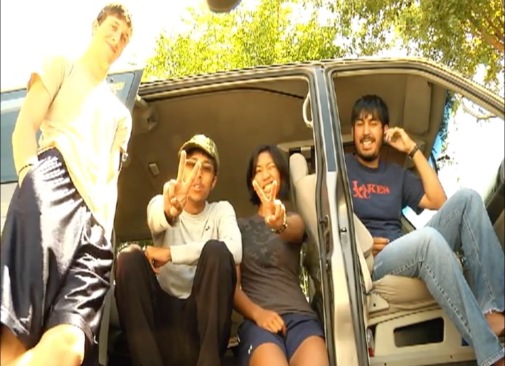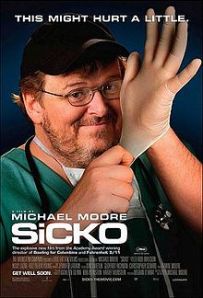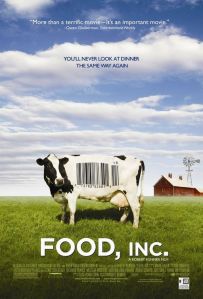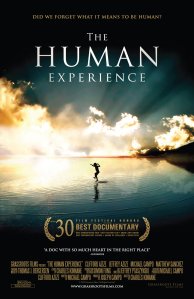Author: Blood, Sweat and Berries
Blood, Sweat and Berries Gets Admitted to the Culture Unplugged Film Festival!
BSB has been on a bit of a hiatus lately:
- Two of our three directors are currently in medical school,
- One board member (and blog editor, ahem) had a baby,
- Our interns’ tenures with us have ended, so blog posts have been sparse, and
- In light of how busy everyone is, our board is regrouping and strategizing for the future.
But we still have good news: the Blood, Sweat and Berries documentary has been admitted to this year’s Culture Unplugged Film Festival!
Culture Unplugged is an organization that brings multicultural and socially-conscious messages to the masses. Since its first online film festival in 2008, over 60 million people have visited the Culture Unplugged site to view original, independent media. This year’s festival theme is “Humanity Explored” and will show films that explore how we as humans are fundamentally connected to one another.
We are so excited to be part of this festival and to show Blood, Sweat and Berries to a global audience. The festival began on December 16—our hard work is available for the world and you for free! Click here to watch (run time is about an hour).
Doc Review #3: “Sicko”
Runtime: 123 minutes
Currently on Netflix: No
Currently on Indieflix: No
IMDb page: http://www.imdb.com/title/tt0386032/
Trailer: http://www.youtube.com/watch?v=8BJyyyRYbSk
Well folks, I finally did something I thought I never would: I watched a Michael Moore documentary. Known to be as left as one can get, the trailers for his films turned me off because of the blatantly obvious, almost annoyingly liberal agenda spewing from them, but for you fine people reading my documentary reviews I thought I’d bite the bullet and try one out.
Now I’m not an ultra-conservative who is going to bash Michael Moore or his films, in fact if you put a gun to my head I’d probably have to say I’m almost right smack dab in the middle of our bipartisan political spectrum. So with that in mind, my verdict of Michael Moore’s 2007 film “Sicko” is…
…Eh, it wasn’t as bad as I thought.
Despite my reservations towards Moore and his films, I can tell you that I came out of the experience still pretty much half-Liberal, half-Conservative. That doesn’t mean, however, that I didn’t learn anything valuable from this film, which mostly explores the lives of patients who have been slighted by the American healthcare system, as well as physicians and patients in foreign countries who brag about their socialized or universal healthcare systems.

Here are just three disheartening facts I learned from the film:
– HMO’s (Health Maintenance Organizations) were created in 1973 to arrange health care and be a liaison for healthcare providers– which sounds fine and dandy if it weren’t that they were truly started to provide LESS care to patients to make more profit, as this transcript of a recorded conversation between Nixon and Assistant to the President for Domestic Affairs John Ehrlichman (yes, the same John Ehrlichman involved in Watergate) shows.
– At the time of the film, insurance companies hired people to go through applications and find ANY way to deny a claim. This could have included the Prudent Person Preexisting Condition, meaning that the company can deny you if you experienced symptoms that, when put together in whatever magical order they can come up with, a health-conscious person would seek medical attention for. You had excessive hair growth and skin changes in your pubescent years? You probably had cancer, meaning no health insurance for you. With this in mind, it’s a wonder to me how anyone before Obamacare even GOT health insurance (to my understanding, Obamacare has significantly improved the situation for people with pre-existing conditions).
– One cochlear implant may be accepted by insurance companies, yet one in both ears is not because it is considered “experimental.”
(That last one caught me by surprise– is it “experimental” to hear out of both ears? To insurers it is, supposedly because there is not enough benefit of hearing out of two ears to justify the added cost. Something two ears is important for is sound localization, which comes in handy when, say, crossing a street. Hearing out of one ear is like seeing out of one eye– sure, you can see things, but you lose essential aspects like depth perception.)
I also learned to look at the release date of the films I watch. Just as I was wondering why every country doesn’t adopt universal healthcare, I noticed Sicko came out in 2007, just before the economic crisis of 2008 and bankruptcy of most of Europe. Many countries in Europe, including Britain, Spain, France, and Greece, had a universal or pseudo-universal healthcare system. The Europeans interviewed in the film bragged about being reimbursed for ambulance rides, free government employees who do laundry or cook for new mothers, and short hospital wait times. But could these impressive benefits have been their downfall?
Actually, it’s not very clear if universal healthcare was a major reason for the financial crisis; the burst European housing bubble may have been a key factor. And though many European countries, especially Spain, moved away from a universal system after the financial crisis, this is likely due to requirements to decrease social and healthcare spending in countries seeking a bailout by the “troika”—the European Central Bank, the European Union, and the IMF, who organized loans to several European countries.
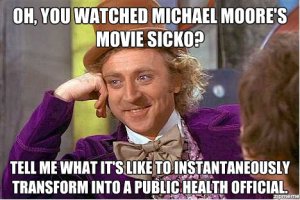
This is starting to sound like a bad high school book report, so I’ll get back to the film, which raised a few questions for a future physician like myself. For example, with all the corruption in the insurance industry does increasing the number or insured patients through Obamacare help the patients, system, or insurers? And will getting more people insured correlate to more people being treated, or will insurance loopholes just take us right back where we started?
The future frightens and intrigues me.
I’ll end this review by saying that the things I’ve heard about Michael Moore- especially the over-the-top effort he puts into conveying his message (such as taking a group of American patients to Guantanamo Bay in a speedboat in an attempt to get them access to its quality healthcare)– were revealed in this documentary. He very matter-of-factly laid out the problems with our healthcare system, and did so without even mentioning Walter Reed’s Building 18 or bashing on Dubya (too much). Whether or not you agree with him, Moore is an obviously talented and influential filmmaker.
Cinematography: 7/10 Nothing too groundbreaking or special film-wise.
Soundtrack: 10/10 The soundtrack very effectively elicited certain emotions. It was clear that Moore had an agenda, and he used the music in the film to make sure those emotions and thoughts came into the viewer’s head.
Editing: 7/10 I knew going into it that the movie was an exploratory piece that involved many shots of home interviews and traveling, meaning shaky footage and thus difficult editing. However, the flow of the movie was very clear and understandable.
Impact: 7/10 The impact would be higher if the financial crisis in Europe didn’t happen soon after the film was released. Had I watched it in 2007, I would give it an 8.5/10, and if I had wanted to pursue a medical career at that time I would give it a 10/10.
Overall: 8/10 This film makes universal healthcare out to be a system sent to us by the gods–whether or not that’s true is up for debate. It was nice to imagine for just a second working as a physician in a system where I wouldn’t have to deal with insurance companies or worry about the patient’s ability to pay for treatment, one where people seem to care more about giving good care than making a profit.
Still think this film is a waste of two hours? Check out this more elaborate, eloquent and professional review written by in the Cannes Journal the day of the movie premiere.
Have you seen Sicko or any of Michael Moore’s other films? If you want to let us know what you think of this review or know of a film we should check out email us at bsberries@gmail.com or hit us up on Twitter or Facebook.
-Scott Hines
Scott Hines is a Director for Blood, Sweat and Berries.
Doc Review #2: “Food, Inc.”
Runtime: 93 minutes
Currently on Netflix: Yes
Currently on Indieflix: No
IMDb page: http://www.imdb.com/title/tt1286537/?ref_=ttawd_awd_tt
Trailer: https://www.youtube.com/watch?v=5eKYyD14d_0
Robert Kenner’s Oscar-nominated Food Inc. is one of those documentaries that gets me fired up no matter how many times I watch it, so please bear with me if this review morphs into a rant about the government. As someone interested in health and nutrition, I sometimes settle in to the idea that everyone has the choice of what food to eat, and that all one has to do to become healthy is eat a higher healthy fat, low-carb diet with foods from quality sources. It should be so simple, right? In a perfect world, maybe. But this is not a perfect world because I do not drive a Ferrari to work or own a unicorn that poops out grass-fed, organic cheeseburgers. Unfortunately, we live in a world with a government that was formed to protect the people but has instead been corrupted by large corporations, putting profits ahead of the health and livelihood of its people. Food, Inc. discusses the dishonesty fed to us in every step of food production even before the seed is planted in the ground or the chicken is hatched from the egg, and it does so with a barrage of stunning statistics that opens the viewer’s eyes a little wider with each one.
The film begins by interviewing Eric Schlosser, investigative journalist and author of Fast Food Nation. He explains that the vast majority of food companies are controlled by about half a dozen large corporations—corporations that keep their farmers so far in debt and fear that even the most ethical farmer is forced to grow chickens that can’t stand because they are too sick and fat, or risk a lawsuit they have no chance of winning. Michael Pollan, author of The Omnivore’s Dilemma, then discusses the history and current uses of one of America’s favorite crops: corn. Farmers are subsidized and encouraged to grow as much corn as possible because it can be used to make all kinds of sweeteners, fuels, building materials, and, most disturbingly, animal feed. It is well known that cows and fish were never meant to eat corn and yet the majority are, which causes countless health problems in the animals and even in humans.

One of these health problems is caused by E. coli O157:H7, a strain of E. coli resistant to a cow’s stomach acids meaning it ends up in their feces and, in turn, ground beef. It is a strain that was never meant to exist in humans, yet by feeding cows food they weren’t meant to eat it was created, strengthened and introduced into the human population. In 2001, this virus killed a two-year-old named Kevin, a perfectly healthy boy who ate a hamburger while on vacation and died twelve days later of kidney failure. His mother, Barbara, is now a food safety advocate and is working hard to enact Kevin’s Law, which would allow the USDA to shut down processing plants that repeatedly produce contaminated food. This no-brainer law has not been passed thanks to lobbying from meat processors, though some aspects have been adopted into Obama’s 2011 FSMA Law.
The film then briefly investigates the correlation between obesity and income level, a relationship that shouldn’t be too surprising considering a cheeseburger at McDonalds costs less than many vegetables at the grocery store. This is in part because the foods that make the cheeseburger so unhealthy— corn and corn-based products, for example— are subsidized by the government. This leads to low-income families, who often work longer hours and have less time to cook or shop for healthy food, to go through the drive-thru or not eat at all (a fact not mentioned in the film is that there is a higher density of fast-food restaurants in lower-income housing areas—coincidence?)
The last sections of the film focus on the government tactics used to increase profits and control the agriculture and farming industry. A farmer who raises grass-fed animals explains that the government has tried shutting down his farm because of “unsanitary conditions” (he processes chickens by hand in an open-air shelter in his field, for example), which is odd because his chicken was tested at a local lab against store-bought chicken and was found to have 27x less harmful bacteria. He then discusses a 1980 Supreme Court ruling that allowed companies to patent genetically-modified organisms and fueled many biotechnology companies, namely Monsanto, to create GMO crops and then control farmers who use those crops through threats of patent infringement lawsuits. These companies can even investigate and sue farmers who never bought GMO seeds if some have blown into their field from a neighboring farm without them knowing. The film then discusses several key players in Monsanto’s strong grasp in the government including Monsanto attorney-turned Supreme Court Justice Clarence Thomas, members of the Clinton and Bush administration, and several members of the USDA and FDA.
Just as I was feeling the overwhelming urge to punch a Monsanto lawyer in the face, the documentary ends with a short glimmer of hope. The conclusion reminds us that with every news story of salmonella or E. coli, and every documentary like Food Inc. (there are many), the curtain covering up the corruption in the food industry is slowly being pulled away, informing consumers who are then better able to vote with their dollar by purchasing local produce and food if possible. It cites the changes in the tobacco industry over the past few decades as evidence that the food industry can similarly improve.
This is another documentary that we watched before filming our own, and was the film I personally kept most in the back of my mind while filming and editing. Though our film focuses mostly on the labor behind the food, while Food Inc. focuses on the government corruption influencing food quality and safety, there is a short section in the film about the large corporation Smithfield arranging with government agencies to only arrest and deport a small number of illegal immigrant workers every night to satisfy the need for deportations with little impact to their workforce.
I couldn’t cover everything I wanted because the film is so densely packed with important information—all I can say is you just have to watch it. I highly recommend this documentary to anyone and everyone, especially those interested in food and health. No matter how many times I watch it I still find myself feeling depressed and angry at the government afterwards. The genius of this film is that I feel these things without the film even grazing the surface of animal rights and humane slaughtering practices— it doesn’t need to because your jaw is already on the floor without these. Funny enough, after watching the movie I had to cook some chicken breasts to bring to work and I just stared at them for a few minutes, glaring at the picture of a happy little farm on the package and thinking about how this chicken probably wasn’t an animal—just a fat, sickly blob of meat who couldn’t walk two steps.
Cinematography: 9/10 From the beginning, you see helicopter shots of rolling fields and smooth panning shots in a large grocery store. Knowing how hard it is to get permission to do these things (having tried myself with our film), I was impressed.
Soundtrack: 9/10 The music helped to elicit emotions; for example, during tense scenes involving the lawsuits between farmers and these corporations the music became dramatic and suspenseful.
Editing: 10/10 The structure of the film was easy to follow. The animations at the beginning explaining the companies who control meat processing or the difference between a chicken of the 1950’s and a chicken today were very well done, and again having tried doing creative animations like this in our own film (having to finally resort to kinetic typography) I was very impressed.
Impact: 10/10 If I could rate this one any higher I would (I guess I could since I made the scoring system, but I’ll resist the urge). This is an issue that affects everyone no matter their income level, race, or any other lifestyle characteristic. Anyone who eats food (which should be everyone) is affected by the laws and actions of the government AND has the power to improve the system.
Overall: 9.5/10
Remember, we love discussion about movies! If you have an opinion about this film, or know of a documentary we should review, email us at bsberries@gmail.com or hit us up on Twitter or Facebook.
-Scott Hines
Scott Hines is a Director for Blood, Sweat and Berries.
Doc Review #1: “The Human Experience”
Runtime: 90 minutes
Currently on Netflix: No
Currently on Indieflix: No
IMDb page: http://www.imdb.com/title/tt1252298/
Trailer: https://www.youtube.com/watch?v=ctyX5ItSQEI
For the first ever BSB documentary review I thought I’d write about one that is very special and dear to us: The Human Experience, a film about looking past any problems we as humans face because we are all going through this thing called “life” together.
Brothers Jeff and Cliff had an abusive past with an alcoholic father, and though they remember happy points throughout their childhood they seem to have missed out on the basic support system that a family is meant to provide. They live at the St. Francis House in Brooklyn, a men’s shelter meant to provide a structured haven of support, with their friends Matthew and Michael. They decide to film this documentary to answer the question, “where are we as humans going and why;” knowing that the only way to answer this question is to go out and actually visit people from various walks of life, they choose three lifestyles to follow: the homeless of New York City, a group of surfers who do international volunteer work, and the lepers of a colony in Ghana.
The two brothers have different feelings about spending several nights as a homeless person– several nights, I might add, that happened to be during a record-breaking cold stretch. Cliff is freezing, uncomfortable, and bored, whereas Jeff takes a more optimistic approach, looking at the cold as a sacrifice he’s willing to make to gain knowledge about this group of people. They interview several of New York’s homeless, who show them how to make shelter out of cardboard boxes and where the best places to sleep are.
Their second adventure takes them to Peru with a group called Surf for the Cause, a small group of surfers who seek out killer waves in poverty-stricken communities around the world. Jeff and Cliff worked at a clinic for children who are abandoned or who can not afford necessary medical treatments and, of course, quickly discovered which child was their favorite (reminiscent of our time in the day care centers in Mt. Vernon, even though they told us every year that we were not allowed to have “favorites”). Their big mission on this trip is to take the children to a larger hospital, and after a small car accident on the highway they manage to get them there safely. When thinking about the children facing unimaginable hardships, as well as his own abusive past, Jeff says, “it was the first time in a long time where I could feel peace in my heart.”

Finally, the brothers accompany Michael and Matthew to a leper colony in Ghana, arguably the ultimate image of a community of dispair and pain. The lepers, ostracized by their family and friends because of their culture’s belief that they are cursed, teach the boys that “even in the deepest suffering there is significance, there is a meaningful process of positive possibilities.” They then travel on to a community of people with AIDS where Michael, whose mother died of the disease when he was just nine years old, faces the fact that he never got to talk to her about it and overcomes this burden by realizing that though the people in this community are poor and a few short years from death, they are still happy because they have faith, friends and family.
The reason I love this documentary so much is because everyone can relate to it. Everyone has some sort of problem they are facing or trial that lies ahead; for me, that trial is moving 2300 miles from home to begin four grueling years in medical school while also joining the Air Force. My trial comes with a set of unique problems– doubting that I can make it through school, having to leave my family and girlfriend, wondering if I will fall victim to the depression and other stress-induced health problems associated with medical school– but even with these problems looming in the distance and getting closer by the second this film reminds me that I am not the only person in the world with problems. More importantly, however, it reminds me that everyone has their own path to take in life, and that these obstacles shouldn’t be seen as problems but rather as small bumps in the path that will make me stronger.
In examining my own problems I realize that I have it pretty well off compared to a lot of people in the world, and that if I have these relatively easy problems to deal with maybe I should help others who are facing problems far worse than mine (joining the military and becoming a doctor, though difficult, do not nearly compare to having leprosy and being shunned by my family and friends). After all, we’re all just floating on a big blue and green rock together— why not help one another out?
Prior to our own journey to live as immigrant farm workers, we watched several documentaries to determine the style that our own would take on. The Human Experience stuck with us for a long time, and we based the structure of our film off of it: one segment of our journey followed by a segment of interviews with experts (in the case of The Human Experience, these experts included an actor, scientist, artist, activist, traveler, advocate, crusader, cleric, priest, rabbi, and “philosopher king.”).
This documentary has won several national and international awards, and even though it was never a Sundance-sweeping blockbuster it is a film that I think everyone should watch at some point in their life, especially during a period of transition.
Cinematography: 7/10 Loved most of the camera shots, however the extreme close ups during interviews get old pretty quickly. I would have rather seen a mix of close and medium distance angles in these instances. But the shots of the landscape and travel were outstanding.
Soundtrack: 9/10 Excellent, moving music that fit well with the footage being shown.
Editing: 8/10 Ever since editing our film I have become more aware and nit-picky about editing mistakes, so there were a few parts that irked me; for example, in the middle of a conversation with several homeless in a soup kitchen the footage fades and a random quote appears on the screen, then the conversation resumes. However, the color and sound editing were very good, the overall footage sequence flowed pretty well, and I thought that having the interviews with the “experts” in black and white was a creative way to differentiate them from their journey.
Impact: 9/10 Like I said earlier, this is a great film to watch during a transition period in life because it encourages the viewer to step back and look at the big picture and realize that their problems are solvable.
Overall: 8.25/10. This is one of my favorites because the message is bigger than your job, race, creed, lifestyle or gender. No matter what life you lead, you can learn something from this movie.
Remember, we love discussion about movies! If you have an opinion about this film, or know of a documentary we should review, email us at bsberries@gmail.com or hit us up on Twitter or Facebook.
-Scott Hines
Scott Hines is a Director for Blood, Sweat and Berries.
BSB Documentary Reviews
Greetings loyal readers! There are many great documentaries out there, so beginning today I will be posting short reviews in hopes to pique your interest in one that may inspire you, open your mind to something new about this thing called “life.” Most of these films come from “best documentaries” lists, others are low-budget independent films, but all of them have an important story to tell. Now, I’m not saying I’m Gene Siskel or Robert Ebert– these reviews are simply the humble ramblings of a lowly film lover and very amateur filmmaker. Watch the films to form your own opinion so you can discuss the film with me in the comments sections. If you know of a film that should be included I’d love to hear about it; email us at bsberries@gmail.com, or let us know on Twitter or Facebook.
-Scott Hines
Scott Hines is a Director for Blood, Sweat and Berries.
Reasons to Support Belle Knox (Even if You Don’t Agree With Her)
For weeks, the media has been in an uproar over Belle Knox, the freshman at Duke University who works as a porn star to pay for tuition.
Well, maybe uproar is the wrong word. The media has been downright civil compared to the mudslinging from everyone else—people who have done everything from revealing her real name to threatening to throw garbage on her.
You don’t have to agree with Knox’s choices to side with her, though. We all have our demons, and Knox must bear the consequences of her actions like anyone else. Regardless of how others feel about her decision to work in porn, Knox’s approach to the scandal is still admirable for many reasons:
- She exposed Duke’s rape culture, a phenomenon in which privileged students think they can get anything they want—including nonconsensual sex. Rape pervades college campuses around the country, so kudos to Knox for discussing how victims, particularly women, are subject to scrutiny and objectification from those who are in no position to judge.
- She stood up for herself, and shows no signs of stopping. Knox wrote a response to the Duke Chronicle’s first article about her, interviewed with the Huffington Post (among others—she has an upcoming media tour as well), and has already posted multiple articles for xoJane. You have to respect Knox’s determination to stand by her beliefs—and she articulates them well for a college freshman.
- She’s starting a conversation. Knox raises questions about how our culture should approach sexuality, and has brought further attention to the rising cost of college education. If a student feels driven to work in porn because she can’t afford tuition, what does the choice say about the value of a college degree?
Knox claims to feel empowered working as a porn star, but those feelings don’t apply to everyone in the industry. Too often, sex is used as a pawn to assign or remove power; consider the porn stars who feel powerless at work, or the plight of sex slaves who never had the freedom to choose and suffer constant degradation. People who judge Knox for her choices use their own sexual morality as a way to establish power over her—no different than people in these adult industries who corrupt human sexuality for personal gains.
Marginalizing people does not change their actions, though; it just reinforces Knox’s view that entitlement places stigmas on outsiders, even though everyone is broken in some way. It reduces righteousness to cruelty.
So let’s treat Knox like this: instead of writing murder and rape threats from behind the safety of our computer screens, let’s see her as a real person—a person with dignity who makes choices and has to live with them like the rest of us.
Do you feel like Knox has been treated unfairly? Leave us a comment.
-Amanda
Amanda Suazo, editor, joined BSB in 2010 as the writing guru for the organization’s website, official documents, and documentary before focusing a bit on philanthropy. Now a graduate of Gonzaga University, she is currently an MBA student and freelance writer. Between Zumba classes and downing espresso, you might catch her attempting to be a vegetarian. Find her on Twitter.
Guinness and the Koch Brothers: How Money Buys Influence
It’s hard to think of St. Patrick’s Day without thinking about Guinness—which made things awkward for organizers of New York City’s St. Patrick’s Day parade this year.
Guinness decided not to join the parade because it barred gay and lesbian groups from participating. Days before, Heineken and Sam Adams brewer Boston Beer Co withdrew their sponsorships of parades in New York and Boston for similar reasons.
It’s a powerful statement coming from businesses whose products are typically associated with the holiday—especially when their financial backing allows the parades to happen in the first place. These events reinforce how having monetary power can garner attention and call others to action.
But those with wealth and high visibility have different ideas about what deserves attention. Guinness used its brand and money to reinforce its political stance at a parade; while the move is admirable, it only influences public opinion in the short run. People with more financial power, however, have a much farther reach—and how they spend their money can affect everyone.
Take David and Charles Koch, owners of the conglomerate Koch Industries: they believe in low taxes, minimal industry regulation, and reduced social services. While they have donated toward causes such as cancer research and the arts, their political involvement has leaders and citizens concerned.
Figures such as Senator Harry Reid have rallied against the brothers for investing so much money in political causes they support. He has some substantial examples to work with:
- Koch Industries is widely regarded as one of the largest air polluters in the country, yet the brothers convinced Congress members to sign a pledge saying they wouldn’t back climate change legislation.
- Americans for Prosperity, a political action committee that heavily relies on the brothers for funding, rolled out a series of ads against the Affordable Care Act—which didn’t really stick to factual information.
- They invested $490 million in the 2012 election cycle, including fundraising for the Republican candidacy.
Regardless of whether anyone sides with the Koch brothers’ or Guinness’s political philosophies, you can’t help but wonder if wealthy people and businesses should feel responsible for supporting a greater good. It’s one matter to influence public opinion by withholding money or not participating (as Guinness did)—but if you provide financial backing to political figures and legislature behind the scenes, how do we know who works for our best interests?
Sure, it’s a stretch to compare a brewery to two wealthy brothers. But both have money, so both have power—it’s just a matter of quantity.
Should Guinness or the Koch brothers practice business differently? Leave us a comment!
-Amanda
Amanda Suazo, editor, joined BSB in 2010 as the writing guru for the organization’s website, official documents, and documentary before focusing a bit on philanthropy. Now a graduate of Gonzaga University, she is currently an MBA student and freelance writer. Between Zumba classes and downing espresso, you might catch her attempting to be a vegetarian. Find her on Twitter.
Why is Hazing Still a Problem?
A fraternity and sorority at the University of Connecticut reminded us on Wednesday that hazing rituals are alive and well.
UConn suspended the two organizations, Sigma Alpha Epsilon and Kappa Kappa Gamma, after a sorority member reported having to “sizzle like bacon” and consume dangerous amounts of alcohol at Sigma Alpha Epsilon’s off-campus house. The national offices for both houses released statements explaining that they do not condone this behavior from members—even though this branch of Sigma Alpha Epsilon has been placed on probation multiple times for similar antics.
It’s nothing new, unfortunately—stories about hazing have been reported for at least a century. Rituals like body shaming, strength tests, overconsumption of alcohol or other substances, verbal harassment, and beatings still make headlines. Measuring one’s worth for an organization by how much worth they can remove from themselves can lead pledges into short-term injuries and long-lasting psychological distress.
Aside from horrific hazing rituals, the desire to join a fraternity or sorority makes sense. New students on campus want to feel like they belong—and would be willing to do almost anything to have a tight group of friends right away. Not everyone in the Greek system enforces hazing with pledges, most of whom are likely just looking for a social outlet.
But imposing harmful conditions for membership into the group poses problems. Outrageous behavior that physically or mentally damages people does not reflect well on students primed to enter the adult world… and nobody would dare pull these stunts in a professional setting after college.
So why is it still a problem?
There are a few theories: schools can’t regulate their Greek systems consistently, bystander behavior (or a need for acceptance, or downright fear) prevents pledges from speaking up, competition between fraternities and sororities raises the stakes for hazing, family histories of passing through the Greek system pressure younger generations to tolerate it, or misinformed students view it as a rite of passage and perpetuate the rituals. Take your pick.
Thankfully, some fraternities and sororities (Sigma Alpha Epsilon included) have opted to completely eliminate pledging from their initiation processes—though as far as fraternities are concerned, only 75 nationwide have made similar bans. Organizations such as Hazing Prevention have provided additional programs to spread awareness such as webinars and National Hazing Prevention Week.
It’s a step in the right direction, at least—hopefully one that will prevent further harm to students that only seek acceptance.
What’s your experience with hazing, and how should fraternities, sororities, and colleges approach it? Leave us a comment!
-Amanda
Amanda Suazo, editor, joined BSB in 2010 as the writing guru for the organization’s website, official documents, and documentary before focusing a bit on philanthropy. Now a graduate of Gonzaga University, she is currently an MBA student and freelance writer. Between Zumba classes and downing espresso, you might catch her attempting to be a vegetarian. Find her on Twitter.
#98 and LGBTQ Tolerance
On Sunday, Jason Collins— a 7-foot tall defensive player for the Brooklyn Nets— made no points in the 11 minutes of game he played against the LA Lakers. But the crowd was cheering for him when his feet hit the court because he walked out as the first openly gay athlete in the history of the NBA, NFL, MLB and NHL.
Collins came out in a Sports Illustrated article written last spring, after finishing the 2012-13 season with the Washington Wizards and becoming a free agent. He was not signed onto another team until hours before the game on Sunday, when he signed a 10-day contract with the Nets.
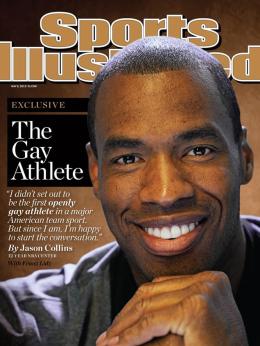
His presence in that game represents the first step in a major transformation in American professional sports, and shows that more people are becoming tolerant toward members of the LGBTQ community. And that’s a good thing, since they still face discrimination— maybe not with fire hoses and vicious police dogs, but through harassment and abuse in the workplace and the locker room.
Discrimination due to sexual orientation clearly violates human rights and dignity. And no, I’m not talking about gay marriage—I’m talking about thinking less of a person simply because of their sexual orientation or gender identity. Even the Catholic Church, who many know does not condone or support gay marriages, encourages acceptance of the LGBTQ community in the workplace and beyond.
The current trend seems to favor judging people for their character rather than their love interests and gender identity (or lack thereof). I’m happy about the shift; this issue has caused too many suicides and too much unnecessary violence, not to mention too many young people walking around feeling less than human simply because society doesn’t accept parts of them. These people may never reach their full potential if they can not even feel comfortable being themselves.
But we’re all a little scared of things we don’t understand, so the transition will be hard. I remember my senior year in high school when many of my friends, classmates, people who I ate lunch with, and teammates started coming out left and right. Going from having no gay friends to having several in the span of a few weeks left me feeling confused, a little scared, and probably a bit discriminatory—in my head, at least. But I never treated them differently because I knew they were still the same people, though perhaps now with a little less weight on their shoulders.
A little bit of tolerance can totally change a community. At first one or two people came out at my school, and it was all anyone would whisper about in the lunch line or between classes. But after the confusion and fear died down, more people felt comfortable following suit. That’s why I like hearing stories about people like Collins; it shows that tolerance can blossom in a community, and that the violence and negativity associated with sexual orientation could someday fade away.
“America the brave still fears what we don’t know
And God loves all his children, is somehow forgotten.” –Macklemore & Ryan Lewis, “Same Love”
Want to know why Jason Collins chooses to wear #98? Click here.
-Scott Hines
Scott Hines is a Director for Blood, Sweat and Berries.

